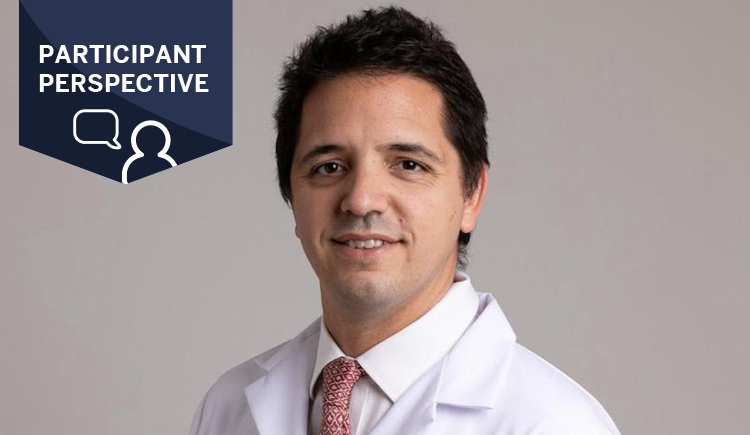
Information regarding COVID-19 has rapidly evolved. The content in this article provides a historical snapshot of events surrounding the date of posting.
Burnout in health care was a widespread problem even before the COVID-19 pandemic, and it has only gotten worse. Almost half of all health care professionals in all specialties and disciplines were affected by burnout due to problems inherent in today's clinical practice environment.
However, the additional stressors associated with COVID-19 have made burnout an even greater threat. According to an international study on the effects of COVID-19, many physicians indicated that their burnout worsened because of the pandemic.
Clinical burnout is an insidious process that can cause serious occupational and personal impairment. The ensuing downward spiral jeopardizes patient care quality and individual well-being. Burnout has been linked to loss of empathy, medical errors, diminished capacity to deliver care, professional disruption, substance abuse, and even suicide.
The pandemic revealed underlying flaws in the health care system, forcing many to deliver care under conditions of extreme resource limitation, personal risk, anxiety, tension, and loss. I'm worried that the pandemic's effects on clinical practice distress and moral injury will last long after the immediate crisis is over. Research on PTSD indicates that the full effect of psychological trauma may take months or years to manifest.
Even though some health care organizations have made wellness a priority, far too many of our colleagues still struggle working in suboptimal environments, encountering daily administrative burdens, inefficient care systems, and a shortage of supportive resources. Many are considering leaving health care entirely.
Leaders of health systems face various challenges, including regulatory requirements and financial constraints, that can divert attention away from the emphasis on wellness. However, we must safeguard the well-being of the health care workers, or we risk losing clinicians when they are most needed. We need a well-supported clinical workforce to tackle the current pandemic, provide ongoing high-quality care, and address future health care challenges.
A Culture of Wellness
Unfortunately, many organizations attempt to reduce burnout with snacks in the break room or free coffee. Not only are these approaches offensive, but there is no evidence that such perfunctory measures have any meaningful impact on resolving clinical practice distress.
Instead, health care organizations should strive for a culture of wellness that values clinicians and prioritizes their professional and personal well-being. Reducing non-clinical administrative tasks, eliminating impediments to patient care, improving flexibility and control over work environments, and strengthening team-based care are all actions that foster a wellness culture.
Some elements of a robust well-being infrastructure include:
- EHR documentation support
- Flexible work schedules
- Appropriate clinical support staff
- Family care services (child-care, elder care)
- Rebalanced clinical workloads
- Peer-support programs
- Streamlined clinical workflows
Redesigning processes to facilitate practice efficiency can result in a healthy state of physical, emotional and social well-being and a sense of professional fulfillment. It is necessary to convince leaders to invest in this change and make well-being a strategic priority.
The first step is to align well-being to organizational priorities. Data demonstrates that burnout leads to increased medical errors, decreased productivity, and higher turnover. Many principles of a wellness culture are low-cost or no-cost interventions. Given the cost-savings, wellness has a strong return on investment from this perspective.
We can also build broad coalitions to help solve the problem by educating people about how burnout affects patient safety. This subject needs to be discussed in the boardroom and brought to the attention of the public.
Building an organizational culture of wellness also leads to better engagement, and engagement is linked to improved patient satisfaction, which is an important metric in the value-based reimbursement model.
If at First, You Don't Succeed
Change is not easy to accomplish, and it takes time. Your initial attempts to change the health care climate may fail to yield immediate results. Do not give up after the first setback. Make progress where you can and keep working on the issue.
You might only be able to raise awareness by bringing in a speaker or conducting an informal burnout survey. These are still important first steps and will help build support and gain momentum for larger interventions. It will require personal effort and commitment. But if we do not continue to advocate for ourselves, why would we expect others to?
The Resiliency Factor
It is important to recognize that resiliency is not a substitute for improving organizational efficiency and developing a wellness culture. Too many of the solutions proposed to burnout target the individual, such as mindfulness, exercise, vacations, hobbies, or rediscovering the joy of medicine. Yes, these activities are beneficial to overall health, but they do not solve the root cause of burnout.
A recent survey demonstrated that physicians had significantly higher resilience scores than the general population. The study shows that burnout is an organizational problem, not a lack of individual resiliency. Expecting clinicians to overcome burnout by being more resilient puts an unfair strain on those still enduring a broken system.
COVID-19, however, presented unique stressors beyond typical burnout problems. The pandemic's negative results exacerbated an already dire situation. Hospitals were overburdened and ill-equipped. The physical, mental, and psychological condition of clinicians suffered as a result. Resilience is needed when coping with this form of trauma.
Factors that foster individual resilience include boundary setting, prioritizing self-care, perspective-taking, and maintaining healthy relationships. One problem is that many health care workers adopt unhealthy behaviors such as excessive working, self-blame, and isolation. We have also lost our sense of community, particularly with the required social distancing.
We must create opportunities for connection, peer support, and comradery to develop and maintain resilience. We can achieve this goal by encouraging collaboration and providing forums for peer discussion. Some have found it helpful to form small groups that meet regularly. These meetings can be conducted virtually during the pandemic. Clinicians must also have sufficient time and emotional energy to invest with their families, friends, and community.
The peer support network at Brigham and Women's Hospital is a great example of what can be done. This program encourages coworkers to reach out to one another and provides a way to extend a non-threatening invitation to talk to others who have experienced a traumatic event, thus increasing access to peer support.
Final Word
Health systems must build a healthier work climate that aligns their commitments, leadership processes, strategies, and activities with evidence-based and promising best practices to minimize burnout and enhance well-being.
Providing the best care to patients necessitates a supported workforce with low burnout and high professional satisfaction. Successful organizations have adopted this mindset, making the well-being of health care professionals a core organizational strategy.
-
Resources
- Physician Burnout, Interrupted. Hartzband, P. Groopman, J. Mayo Clin Proc. 2019 Aug;94(8):1556-1566.
- Executive Leadership and Physician Well-being:Nine Organizational Strategies to Promote Engagement and Reduce Burnout. Shanafelt, TD. Noseworthy, JH. Mayo Clin Proc. 2017 Jan;92(1):129-146.
- The Business Case for Investing in Physician Well-being. Shanafelt T, Goh J, Sinsky C. JAMA Intern Med. 2017 Dec 1;177(12):1826-1832
- West CP, Dyrbye LN, Sinsky C, et al. Resilience and Burnout Among Physicians and the General US Working Population. JAMA Netw Open. 2020;3(7):e209385. doi:10.1001/jamanetworkopen.2020.9385


